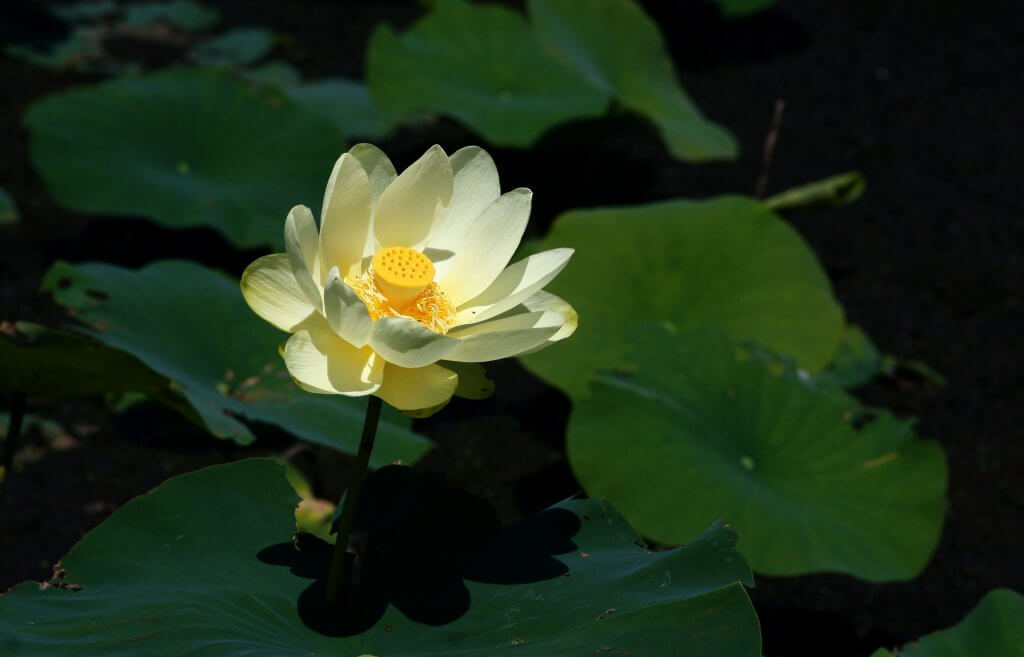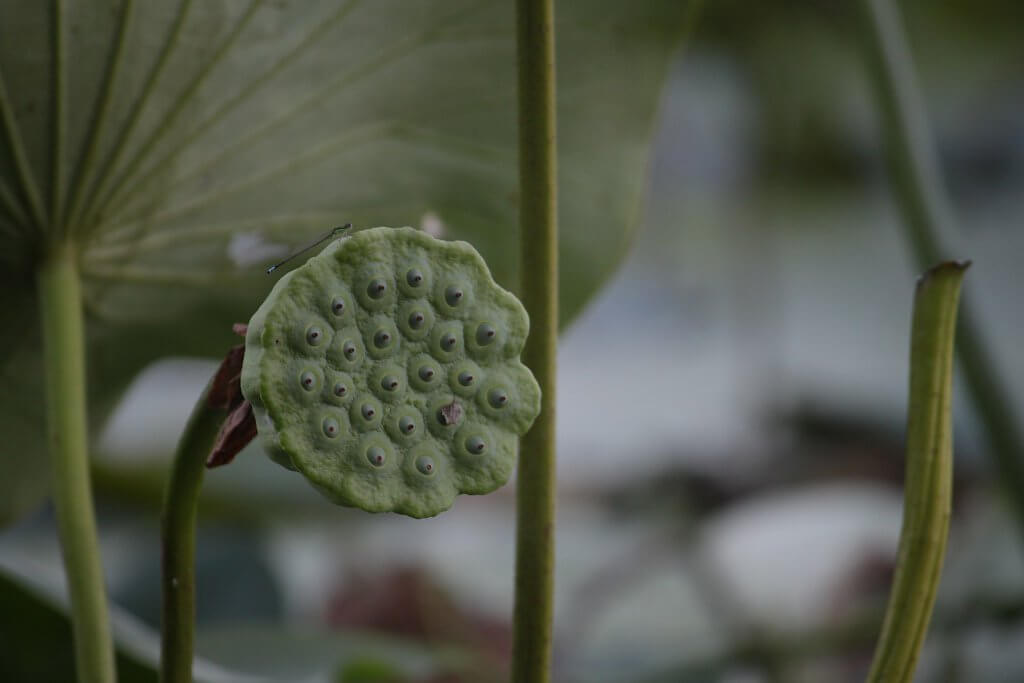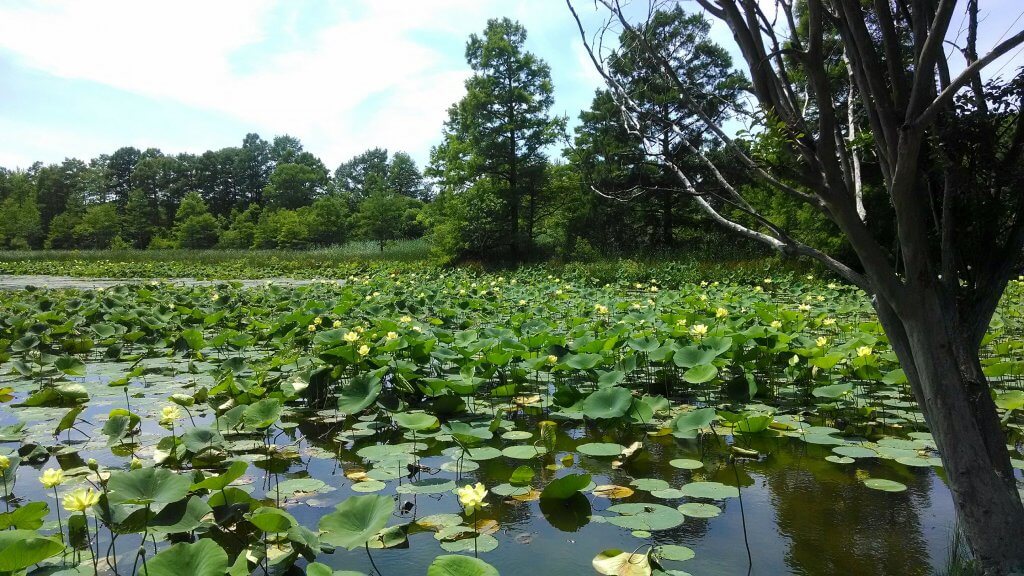American Lotus (Nelumbo lutea), are the bright eye catching lotus flowers that have likely caught your eye across lakes, ponds and slow moving rivers. They are a native species to the US, with high populations within a number of midwestern and southeastern states. You may also know them simply as yellow lotus or water-chinquapin, likening its seeds to the equally tasty North American chestnut tree.

The most recognisable feature of the plant is their pale, cream colored petals surrounding a sunshine yellow center of stamens and the pistil. The large flowers tend to sit just above the water on a short stem, flowering from May until August. Their showy flowers bloom for only two days before dropping their petals, similar in nature to the day long blooms of day flowers and day lilies. Seedpods are very distinctive, forming into a cone shape with a flat top, in which the fruits are very visibly embedded.
The leaves are a broad circular shape, that sit at the waters surface. The leaf stems extend upwards through the water from the roots which anchor themselves into the muddy bottom of freshwater bodies of water. They tend to reach a maximum height of around 6ft, so tend to thrive on lake edges, in water that isn’t too deep. The tubers sit within the mud, forming unique segmented chains which many compare to a chain of sausages.
Edible parts and other uses
Newly emerging leaves, seeds, fruits and also the tubers of American lotus can all be foraged and eaten. The tubers have a sweet potato flavoring, and can be roasted, mashed and incorporated into many recipes. Similarly, the seeds and fruits are also very versatile, although some can find the green fruits a little bitter, the seed within has a delicious nutty flavor. You can roast, candy, grind or simply eat them raw for a quick treat.

The tubers were often heavily relied upon as a food source for native Americans. These would be used in the same way as potatoes, boiled and added into broths and stews. The seeds and fruits were also incredibly valuable, providing a good source of protein and nutrients. A flour could be prepared with dried seeds and fresh green seeds could be eaten raw or added into hot dishes.
Cautions
Like peppergrass, American lotus is an accumulator plant, meaning it stores any surrounding metals from the soil it sits in. You should therefore avoid foraging in urban areas, and only moderate amounts should be eaten, just incase.
Foraging
American lotus plants are frequently planted within urban landscape settings because of their ornamental value. Although widespread in public lakes and ponds, you should only forage in these locations with caution. Apart from aggravating the local gardener, the water could have minor contamination from urban pollution, so wild lakes are best for foraging.

Spreading easily via seeds and creeping underwater rhizomes, you are likely to find the lotus growing in large colonies. Depending on the temperature, and your courage, bring some waders or swimmers, and begin your harvest. You can collect the fruits and seeds in late summer. Whereas new shoots will be ready for harvesting in the spring.
The tubers can be harvested all year round, again hinting at their importance as a reliable food source for Native Americans. Many claim that their flavoring is however sweetest during the fall.
Did you know…
As well as an uniquely shaped seedpod, the tubers of American lotus have a curious cross section pattern when sliced. A cross section of the tuber reveals a series of holes which are in fact a collection of air passages.
Conclusion
Certainly a fun plant to forage, and one you don’t mind wading through lakes for! Tasty and nutritious, and with a great history as a local food source for native Americans. American lotus is a plant we should all try foraging at least once.
—————Written by Hannah Sweet
Hannah is a freelance writer and graphic designer from the UK. With a penchant for travelling, photography and all things botanical, she enjoys writing about a wealth of topics and issues, from conservation and slow living, to design and travel. Learn more about her writing and design services at www.sweetmeanders.co
Many of our readers find that subscribing to Eat The Planet is the best way to make sure they don't miss any of our valuable information about wild edibles.
See our privacy policy for more information about ads on this site






